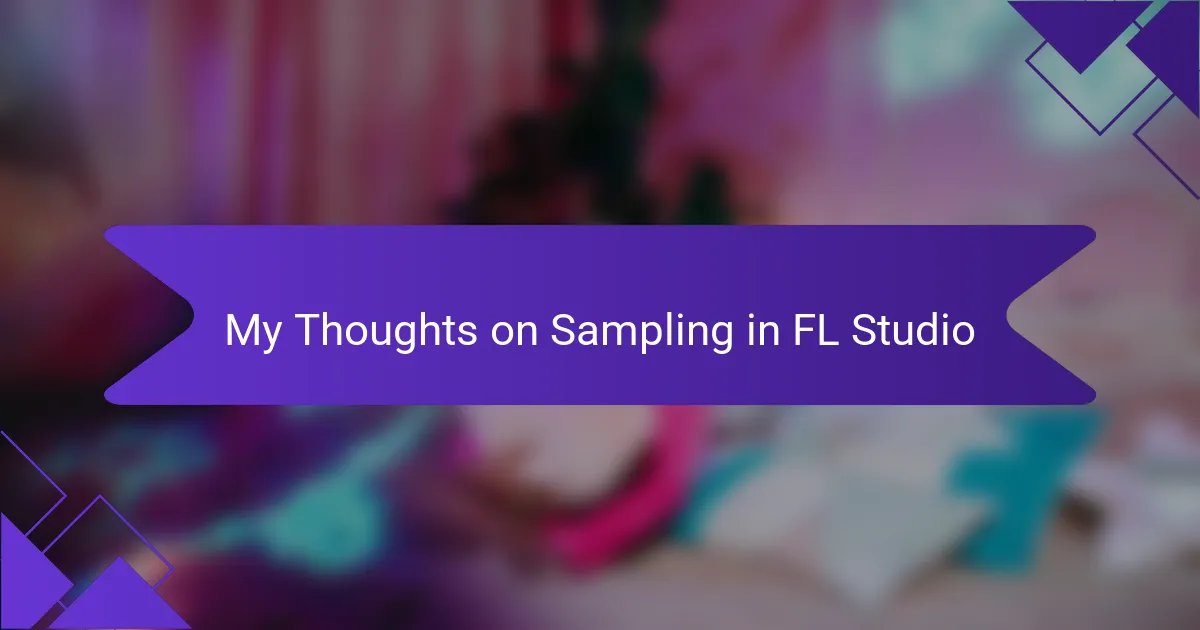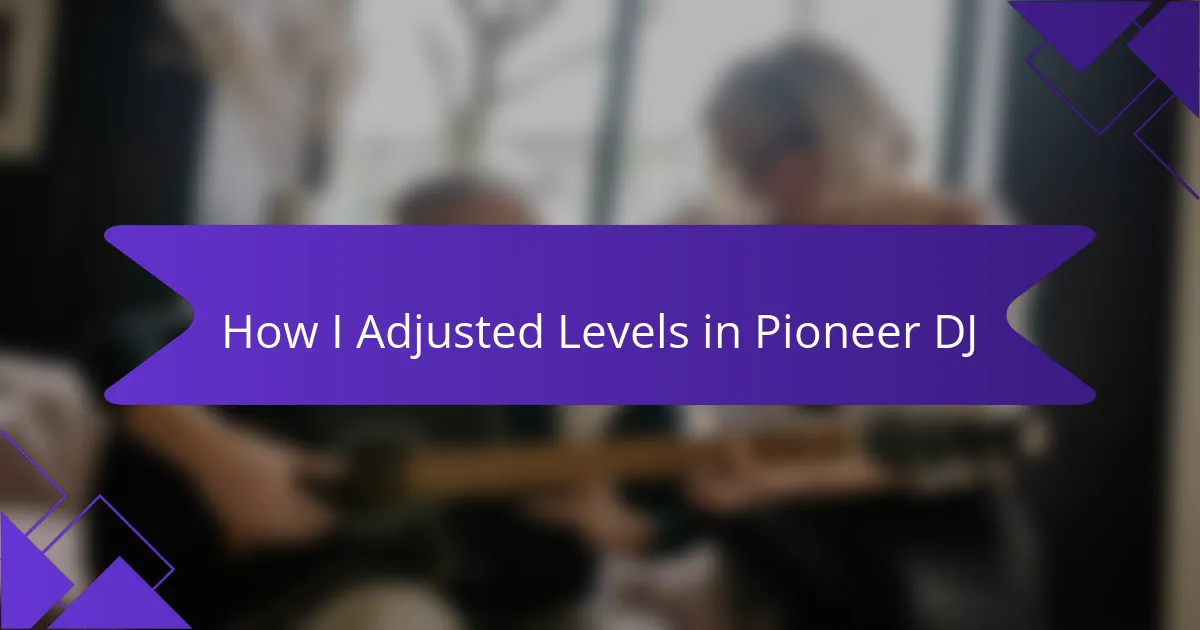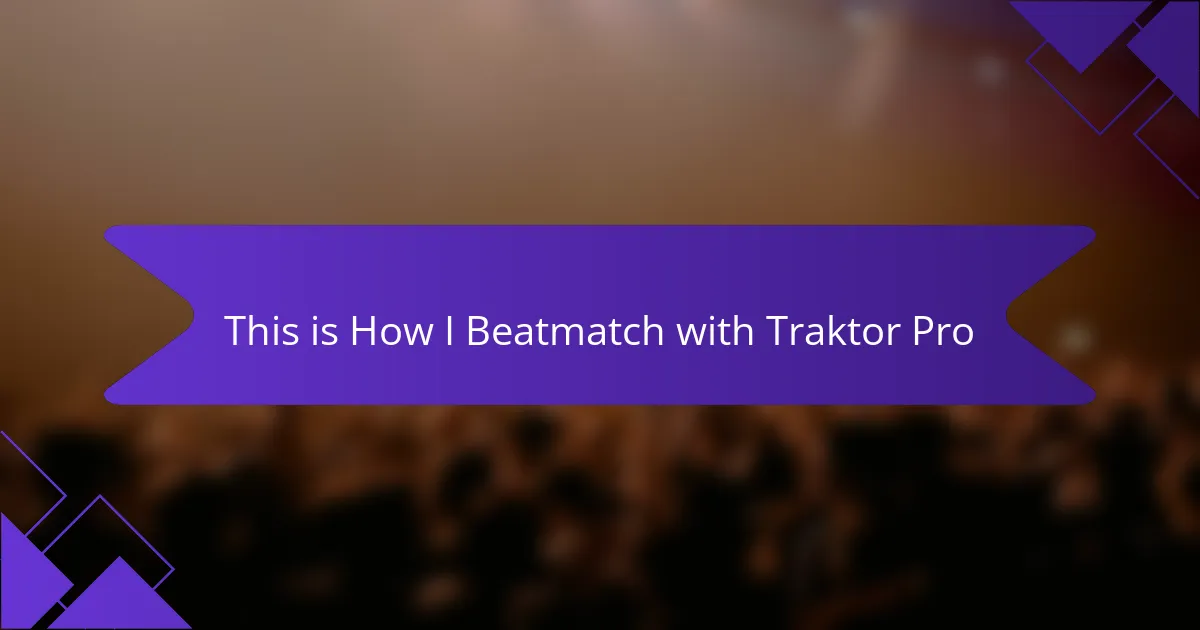Key takeaways
- Filters, such as high-pass and low-pass, are essential for shaping sound and enhancing DJ mixes by creating smoother transitions and dynamic experiences.
- Using filters allows DJs to craft unique sounds and blend genres effectively, adding excitement and keeping the audience engaged.
- Challenges with filters include balancing frequencies and ensuring seamless transitions, which can be managed through practice and moderation.
- A personalized filter setup can significantly enhance mixes, helping to create emotional journeys for the audience and elevate the overall performance.

Understanding DJ Mix Filters
Filters in DJ mixes are essential tools that can dramatically shape the sound. I’ve found that high-pass filters are perfect for removing unwanted low frequencies, creating space for vocals and melody to shine. Isn’t it incredible how a simple twist of a knob can transform a track’s entire vibe?
When I first started mixing, I didn’t fully appreciate the power of low-pass filters. They allowed me to smooth out harsh sounds, transitioning more seamlessly between tracks. I remember a moment at a gig when I used a low-pass filter to build tension before dropping a bass-heavy track, and the crowd’s reaction was electric.
Understanding the nuances of these filters fuels my creativity. Each mix becomes an exploration where I can manipulate sound and emotion. How do you use filters in your mixes? For me, it’s about finding that sweet spot where sound meets intention, creating an atmosphere that resonates with the audience.
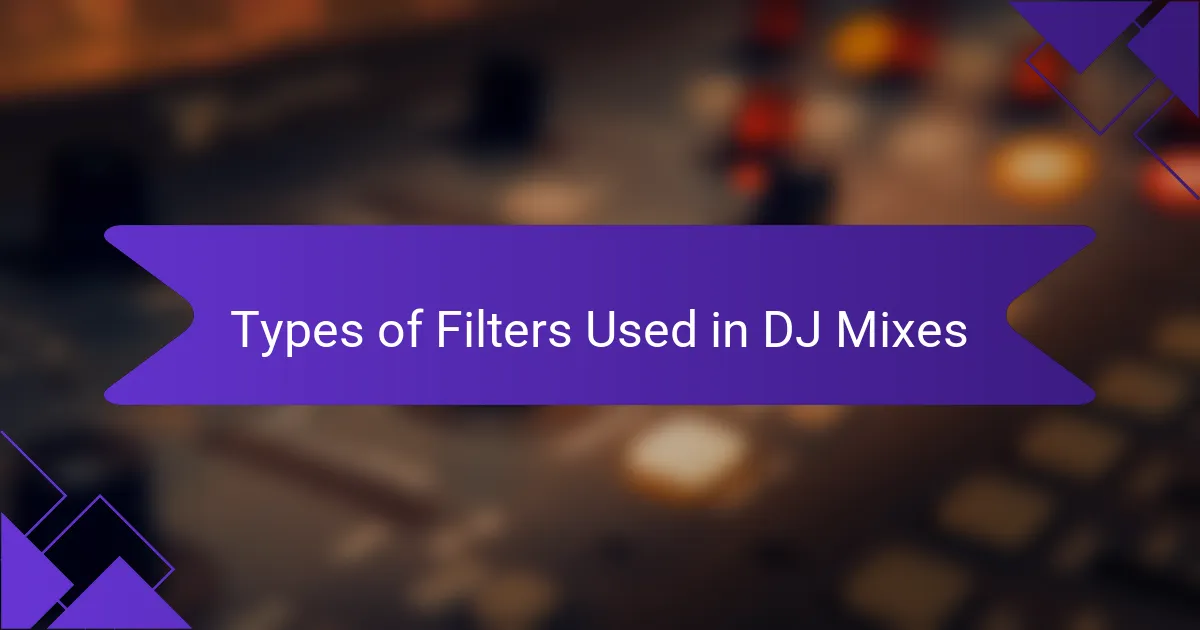
Types of Filters Used in DJ Mixes
When it comes to filters in DJ mixes, I often find myself using several types that each bring a unique flavor to my sets. High-pass filters allow me to eliminate low frequencies, which can help keep the mix clean and focused during transitions. I remember a gig where I used a high-pass filter during a buildup, and the energy in the room felt electric as the crowd anticipated the drop.
On the other hand, low-pass filters roll off high frequencies, which can create a warmer sound, perfect for blending tracks or creating a smoother transition. In one of my earlier sets, I played around with a low-pass filter while mixing a deep house track; it added a lush quality that made the experience memorable for both me and the audience. Here’s a quick rundown of common types of filters I utilize:
- High-Pass Filter: Cuts low frequencies; great for transitions.
- Low-Pass Filter: Removes high frequencies; adds warmth to the mix.
- Band-Pass Filter: Isolates a specific frequency range; good for highlights.
- Notch Filter: Dips a narrow band of frequencies; useful for eliminating problematic sounds.
By understanding how to manipulate these filters, I can shape the sound of my mixes and enhance the overall vibe of my performances.
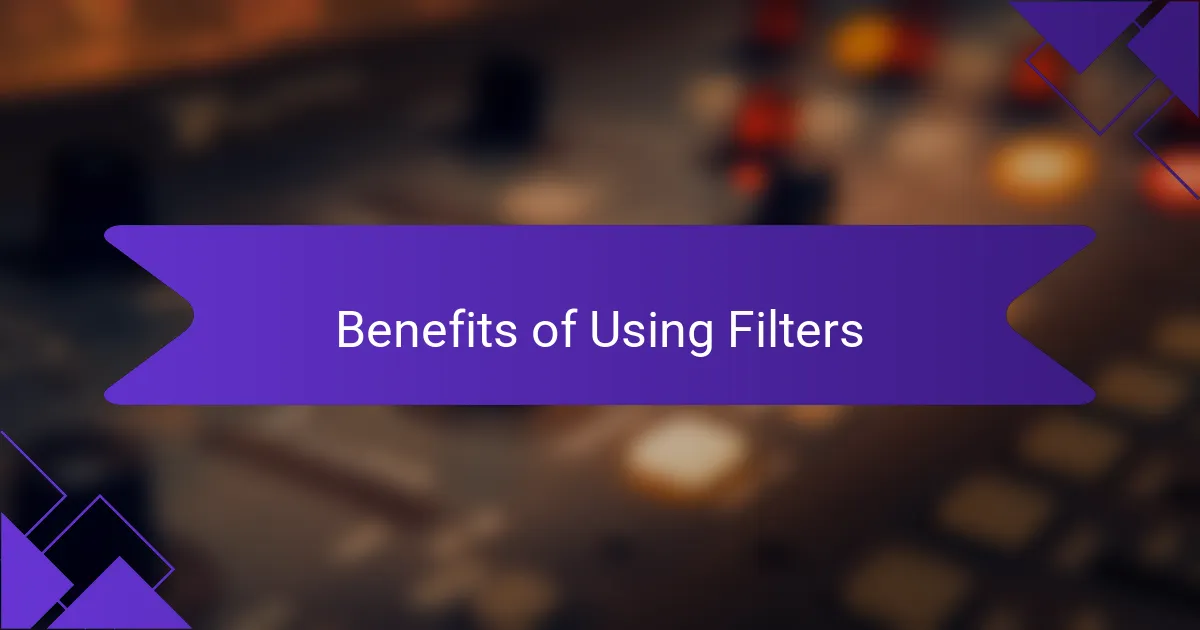
Benefits of Using Filters
Using filters in DJ mixes offers a plethora of benefits that can enhance the listening experience. Personally, I’ve found that filters allow me to create a smoother transition between tracks, which keeps the energy flowing on the dance floor. By adjusting the frequency ranges, I can emphasize certain elements of a track and add depth, making my mixes more dynamic and memorable.
Another important benefit I’ve experienced is the ability to craft unique sounds that can surprise and delight the audience. For instance, a low-pass filter can create that satisfying build-up before a drop, heightening anticipation and excitement. This not only keeps the crowd engaged but also allows me to leave my signature mark on the mix.
Finally, filters can help in blending different genres seamlessly. I’ve done this many times, pairing house with classic rock by using filters to cut off certain frequencies, making a fresh fusion that resonates with my audience. It’s incredibly rewarding to witness people react to something unexpected yet enjoyable in my sets.
| Benefits | Personal Insights |
|---|---|
| Smooth Transitions | Maintains energy flow on the dance floor. |
| Unique Sound Design | Creates anticipation and excitement. |
| Genre Blending | Enables fresh fusions that surprise the audience. |
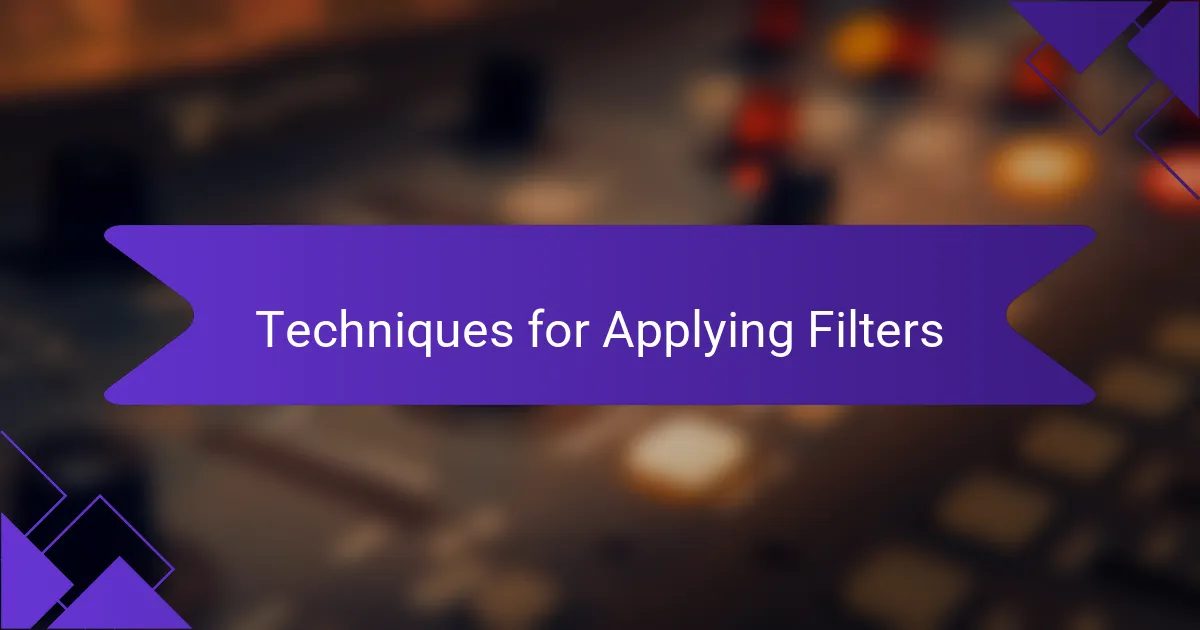
Techniques for Applying Filters
When applying filters in my DJ mixes, I’ve found that it’s essential to understand the different types of filters available. For instance, low-pass filters allow bass and rhythm to shine through, making dancefloor energy palpable. Personally, I’ve used this technique during peak moments in a set to create an intense connection with the audience.
Another approach is using high-pass filters to clean up a track before dropping in the next one. It helps eliminate unwanted low frequencies, resulting in a crisper mix. I remember the first time I used this technique; it felt like bringing fresh air into the mix, and the crowd responded positively.
Lastly, band-pass filters can be particularly effective for isolating certain elements of a track while keeping the overall sound intact. I often apply this technique when transitioning between genres, allowing me to maintain a cohesive flow while shifting sounds. It’s amazing how a simple adjustment can elevate the experience on the dance floor.
| Filter Type | Effect |
|---|---|
| Low-Pass | Allows low frequencies to pass, emphasizing bass and rhythm. |
| High-Pass | Removes low frequencies, enhancing clarity and definition. |
| Band-Pass | Combines low and high-pass qualities, isolating mid-range frequencies. |
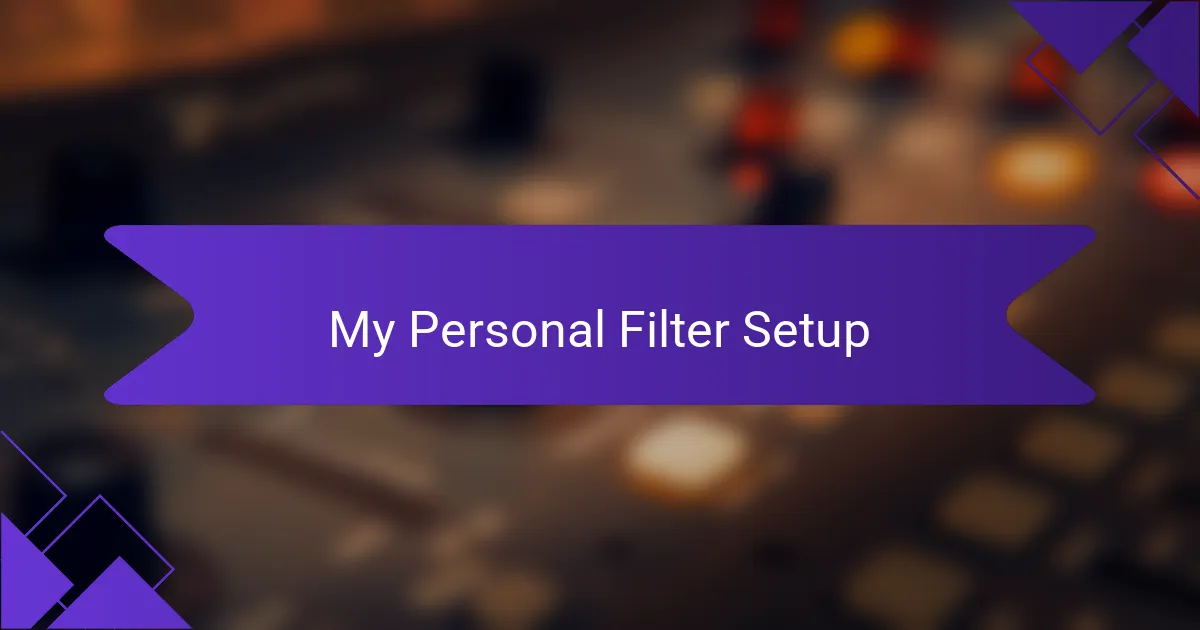
My Personal Filter Setup
When it comes to my personal filter setup, I lean heavily on a combination of low-pass and high-pass filters to create depth in my mixes. I vividly remember the first time I experimented with a low-pass filter during a live set; it felt like unveiling a hidden layer in the track that transformed the whole atmosphere. That moment made me realize how crucial these tools are—not just for sound manipulation but for crafting an emotional journey for my audience.
My go-to filter setup includes:
- Low-pass filter for smoothing and warming up the basslines
- High-pass filter to crisp up the highs and eliminate unnecessary rumble
- Resonance adjustments to add character and depth
- Sweep and automation for dynamic transitions
- Utilization of filter effects during breakdowns to build suspense
These elements not only enhance the listening experience but also allow me to connect more deeply with the crowd.
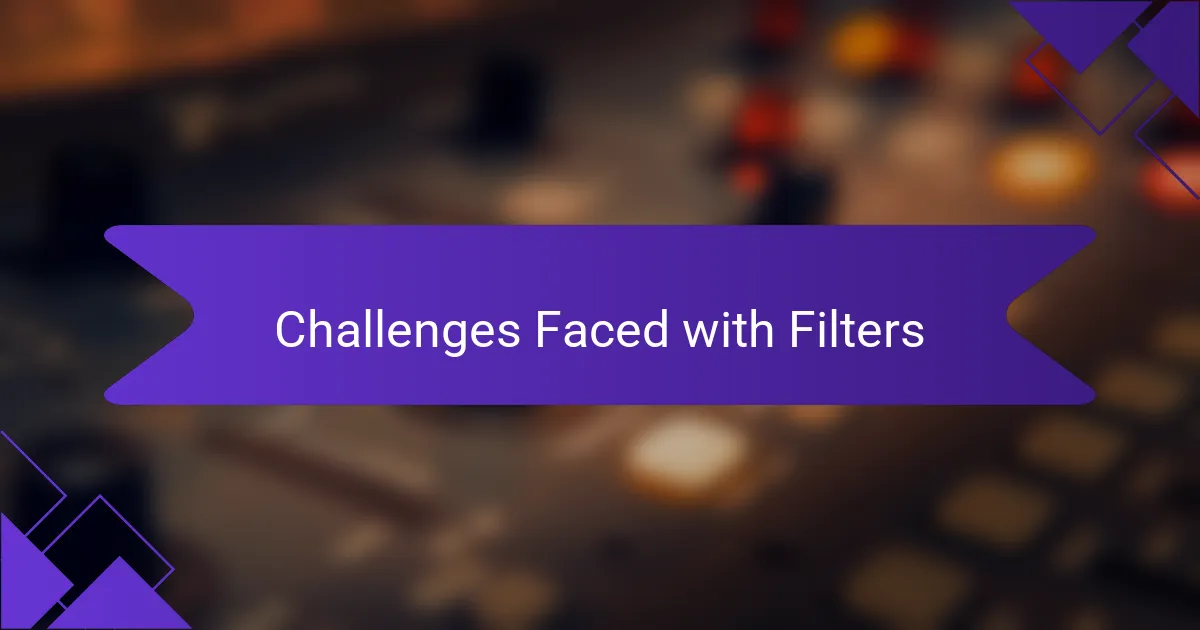
Challenges Faced with Filters
Using filters in DJ mixes can enhance creativity, but I’ve encountered several challenges along the way. One major issue is the ability to balance the frequencies effectively; too much filtering can obscure vital elements of the track, leaving the mix feeling empty. I remember a gig early in my career where I overused a low-pass filter, and the audience noticeably lost interest, which taught me the importance of moderation and clarity.
Another challenge is ensuring seamless transitions when using filters. Abrupt changes can disrupt the flow, causing the energy on the dance floor to dip. I’ve learned to practice these transitions rigorously, so they feel natural rather than forced. This experience has underscored the importance of rehearsal; filters should feel like an enhancement, not a hiccup.
Here’s a quick comparison of some challenges I’ve faced and how I’ve managed them:
| Challenge | Solution |
|---|---|
| Frequency Imbalance | Use filters sparingly and always test in advance. |
| Seamless Transitions | Practice filter transitions during rehearsal sessions. |
| Audience Engagement | Monitor crowd reactions and adjust filtering techniques accordingly. |
